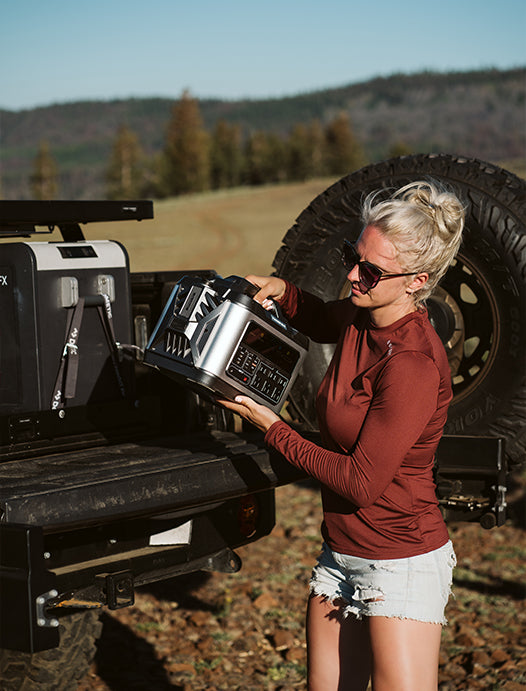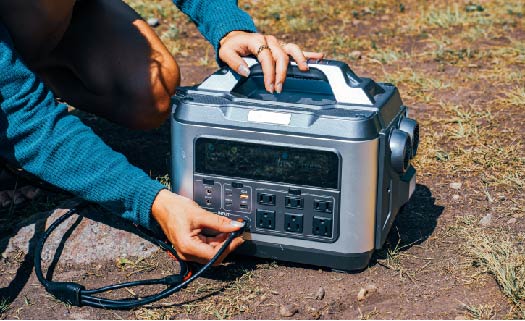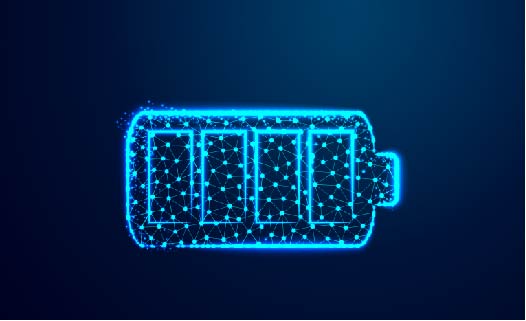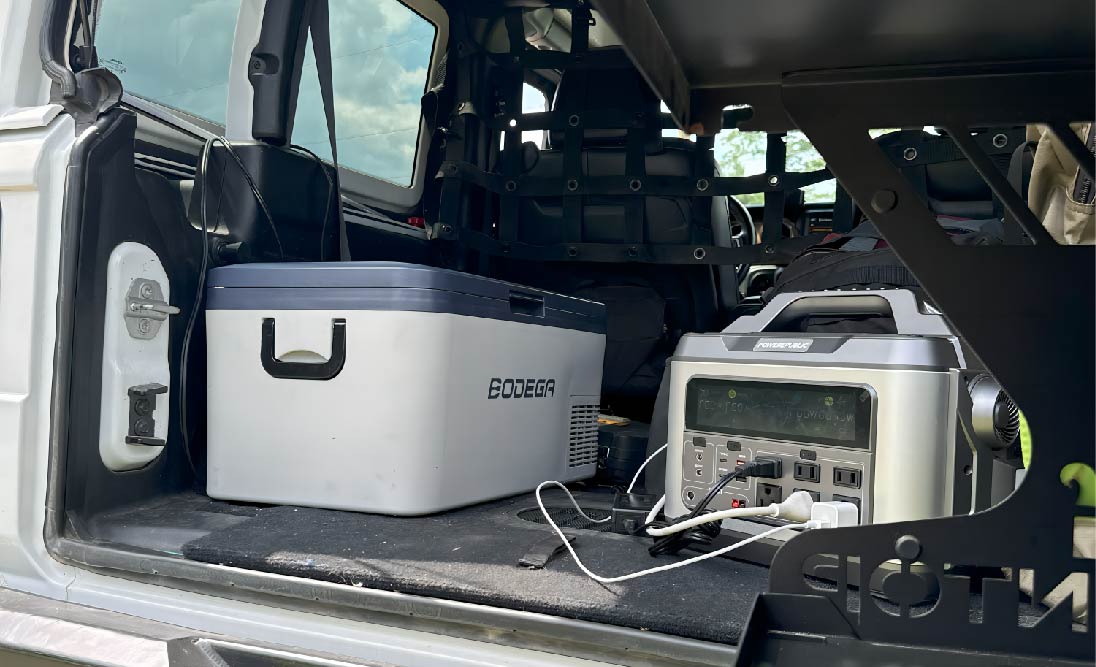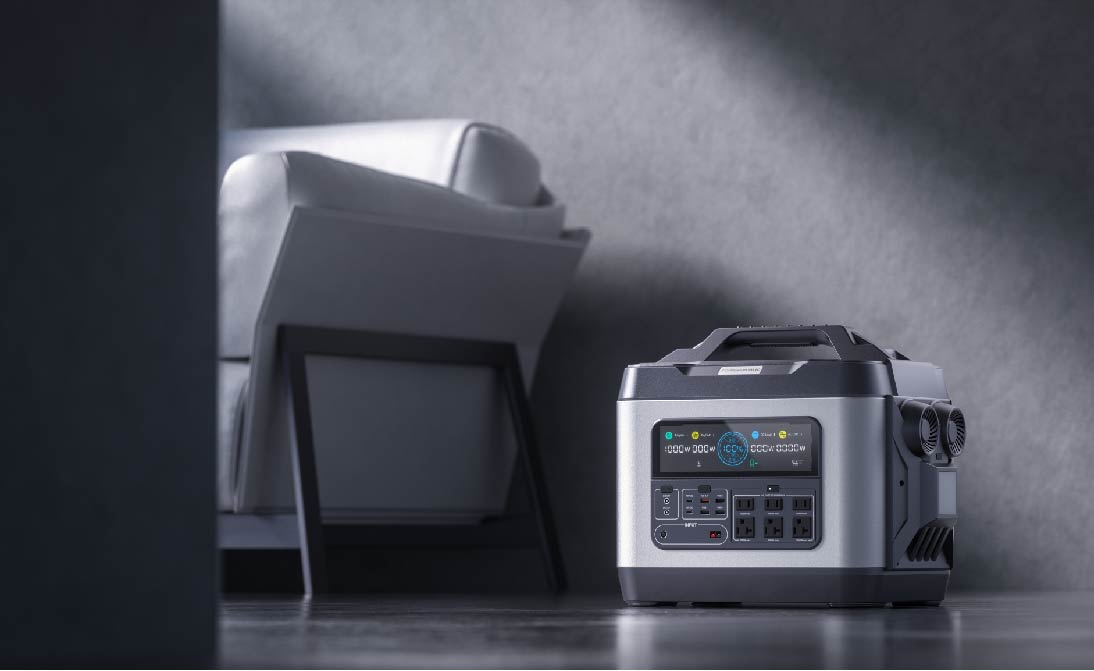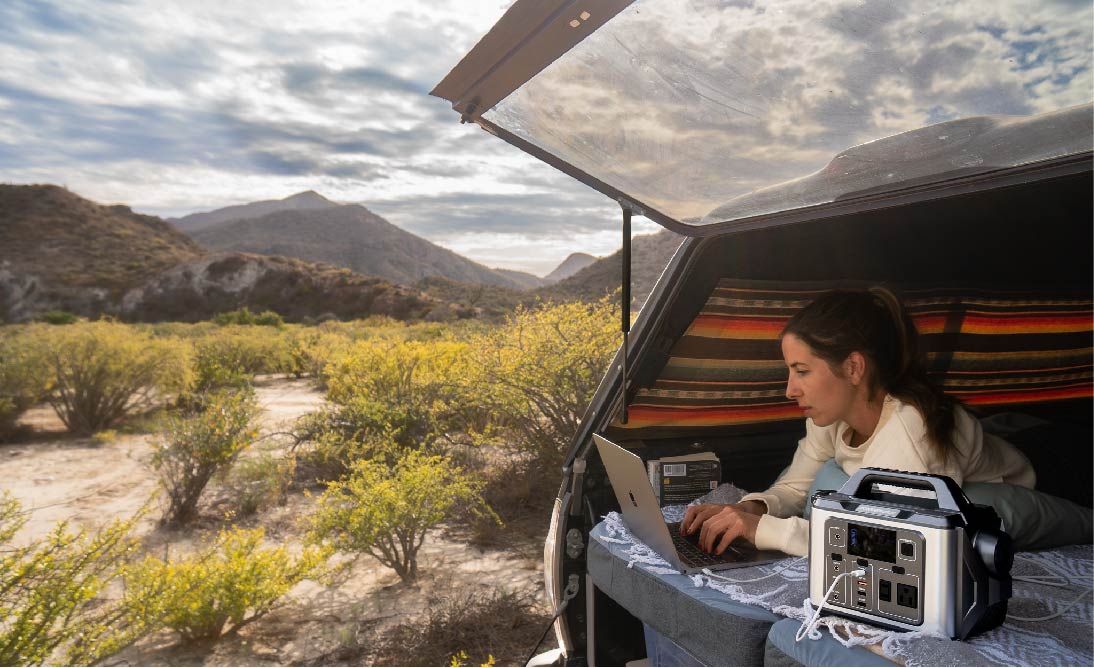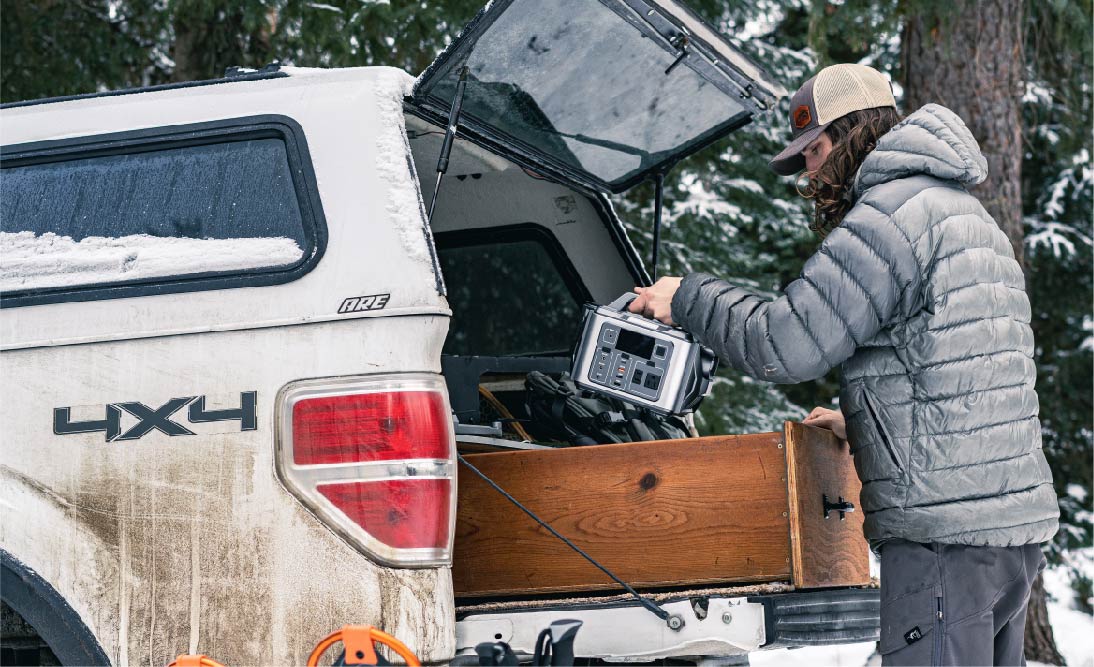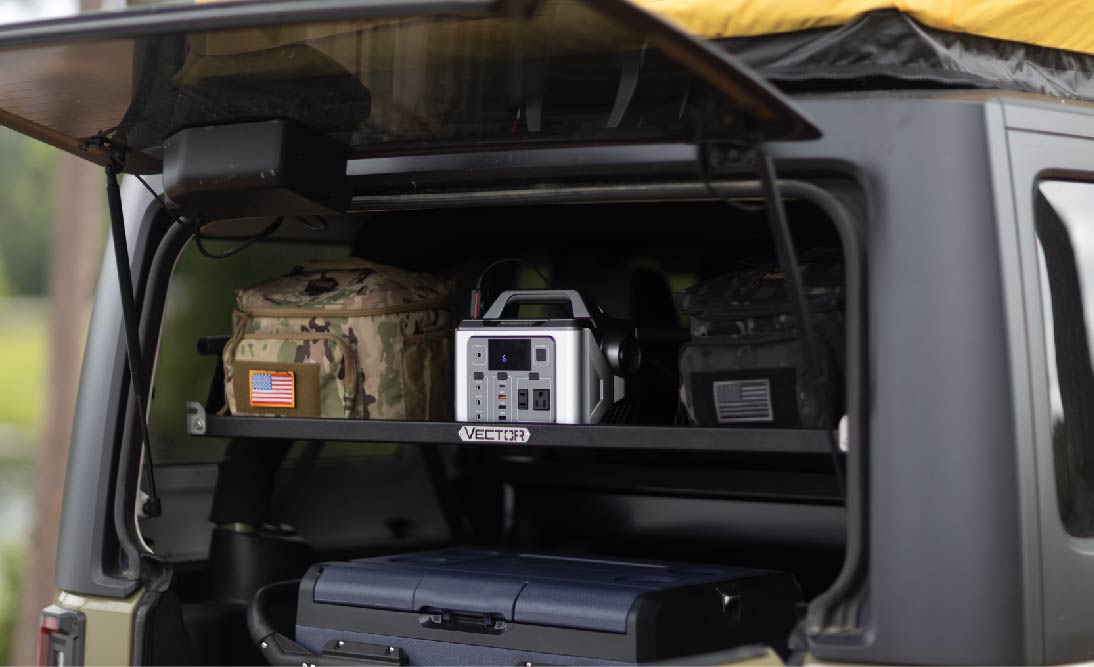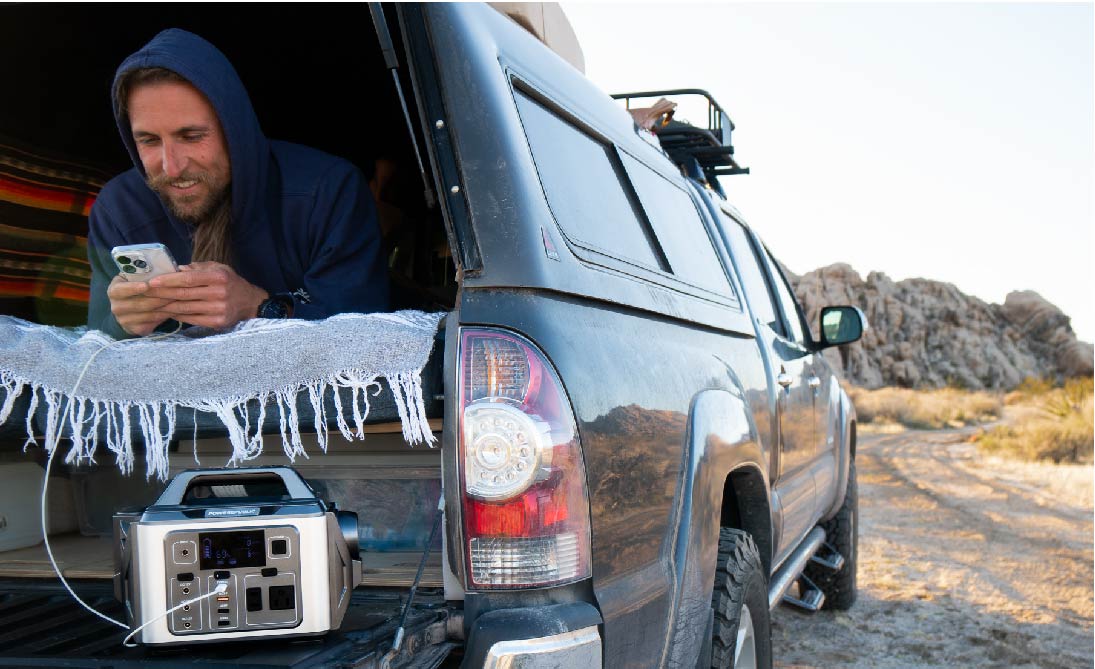Table of Contents:
People with sleep and breathing disorders often rely on Continuous Positive Airway Pressure (CPAP) devices to maintain steady breathing during sleep. A reliable power source is crucial, especially during power outages. This makes a backup battery an essential component of their CPAP therapy. Just as important as having a backup at home, a CPAP travel battery becomes indispensable during trips, ensuring uninterrupted therapy and peace of mind.
In this comprehensive guide, we will delve into the world of CPAP travel batteries. We'll discuss key considerations for using them while traveling and introduce two portable power stations from POWEREPUBLIC. Whether planning a short or long trip, understanding how to choose and use a CPAP travel battery effectively can significantly enhance your travel experience, ensuring your therapy continues seamlessly, no matter where you are.
What is a CPAP Travel Battery?

A CPAP (Continuous Positive Airway Pressure) travel battery is a portable power source designed for use with CPAP machines, which are medical devices used by individuals with sleep apnea and other breathing disorders. Portable power stations stand out as one of the best CPAP travel batteries. These batteries are essential for ensuring that CPAP machines can continue to operate even when access to regular power sources is limited or unavailable, such as during travel or in case of power outages.
Key features of CPAP travel batteries include:
-
Portability: They are typically lightweight and compact, making them easy to carry during travel.
-
Compatibility: These batteries are designed to work with various models of CPAP machines, but it's important to check compatibility with your specific device.
-
Capacity: The battery capacity determines how long it can power a CPAP machine on a single charge. Higher-capacity batteries can last longer, which is crucial for extended trips with limited charging opportunities.
-
Charging Options: Many CPAP travel batteries can be charged through standard AC outlets, and some may also offer the ability to charge via USB or even solar panels.
-
Safety Features: They often include safety features to protect against overcharging, short-circuiting, and other potential electrical issues.
-
Regulatory Compliance: Since CPAP machines are medical devices, their batteries must comply with certain health and safety standards.
CPAP travel batteries are invaluable for individuals who rely on CPAP therapy to maintain normal breathing during sleep, particularly when they are away from home or in areas where electricity is unreliable. They ensure that therapy is not interrupted, which is critical for the health and well-being of the user.
What's the Power Requirement for a CPAP?

The power requirements for CPAP (Continuous Positive Airway Pressure) machines can vary based on the type and model of the device. Here’s a table about the typical power requirements for different types of CPAP machines:
|
Type of CPAP Machine |
Power Requirements (Watts) |
Power Supply (Volts) |
Special Features |
|
Standard CPAP Machines |
30-60 |
100 to 240 (AC) |
Basic Models |
|
Auto-Adjusting CPAP (APAP) Machines |
30-60 |
100 to 240 (AC) |
Automatically Adjusts Pressure |
|
BiPAP/VPAP Machines |
Up to 80 |
100 to 240 (AC) |
Dual Pressure Settings |
|
Travel CPAP Machines |
Less than 40 |
100 to 240 (AC), Battery Options |
Portable, Designed for Travel |
|
CPAP Machines with Heated Humidifiers |
50-100 |
100 to 240 (AC) |
Integrated Heated Humidifier |
It's important to refer to the specifications provided by the manufacturer of your specific CPAP machine. This information is crucial when selecting a CPAP travel battery or planning for power needs during travel or in situations where access to an electrical outlet is limited.
Can You Bring a Portable Power Station On an Airplane?

Bringing a portable power station on an airplane is subject to specific regulations, primarily related to the capacity of the battery inside the power station. Here are the key points to consider:
-
Battery Capacity Limits: The International Air Transport Association (IATA) guidelines, which most airlines follow, generally allow passengers to carry batteries with a capacity of up to 100 watt-hours (Wh) in their carry-on baggage without any approval. Batteries with a capacity between 100 Wh and 160 Wh may be carried in carry-on baggage with airline approval, and a limit of two spare batteries applies. Batteries over 160 Wh are typically not allowed on passenger aircraft.
-
Lithium Battery Regulations: Since most portable power stations use lithium batteries, they fall under strict regulations due to the potential fire risk associated with lithium batteries.
-
Carry-On vs. Checked Baggage: Portable power stations are usually required to be carried in carry-on baggage, not in checked baggage. This is because they can be better monitored and dealt with by the cabin crew in case of any issues.
-
Airline Specific Rules: Airlines may have their own specific rules and limitations, so it's important to check with your airline before traveling.
-
Device Labeling: Ensure that your portable power station is clearly labeled with its capacity (in watt-hours) and type of battery. This information is usually required during security checks.
-
Security Screening: Be prepared for additional security screening of your portable power station. It’s a good idea to have the device easily accessible in your carry-on for inspection.
Remember, these guidelines can vary based on the airline and the specific regulations in place during your travel. It's always best to check the most current regulations with your airline before flying.
Best CPAP Travel Battery

As we know, using a CPAP machine can last for hours, so it's important to have a reliable power source to keep it running without interruption or the risk of running out of battery. The POWEREPUBLIC T1200 and T2200 are two of the best portable power stations for CPAP machines due to their large capacity, long-lasting batteries, compatibility with solar panels for recharging, and car socket compatibility for charging while driving.
To better understand their functionality, please refer to the table below, which details their important features and the working time for a CPAP machine:
|
Models |
Features |
Est.Woking Time(hours) |
|
1200W/1110Wh, 2600W Peak Power Lithium-ion Batteries 13 Output Ports User-Friendly LCD Screen Rugged-Looking and Durable Solar Panel Compatibility Car Socket Compatibility |
Standard CPAP(30-60W): 15.5 - 31.5 Auto-Adjusting CPAP(30-60W): 15.5 - 31.5 BiPAP/VPAP(up to 80W): 11.5 Travel CPAP(up to 40W): 23.5 CPAP with Heated Humidifiers(50-100W): 9.5 - 18.5 |
|
|
2200W/2240Wh, 4500W Peak Power LiFePO4 Batteries 15 Output Ports User-Friendly LCD Screen Rugged-Looking and Durable Solar Panel Compatibility Car Socket Compatibility |
Standard CPAP(30-60W): 31.5 - 63.5 Auto-Adjusting CPAP(30-60W): 31.5 - 63.5 BiPAP/VPAP(up to 80W): 23.5 Travel CPAP(up to 40W): 47.5 CPAP with Heated Humidifiers(50-100W): 19 - 38 |
Note that:
-
Working Time(hours)=Capaity(Wh)*0.85/Power of the CPAP(W)
-
Always look for portable power stations with higher capacity as you may want to charge other devices at the same time.
For How Many Years Can I Use A Portable Power Station?

To determine the lifespan of a portable power station, it's important to consider the two common types of batteries used in these devices: Lithium-ion (Li-ion) and lithium-iron phosphate (LiFePO4). The lifespan of each battery type is generally measured in charge cycles, and this can be used to estimate the years of use.
Lithium-ion (Li-ion) Batteries
-
Charge Cycles: Li-ion batteries typically have a lifespan of about 500 to 1000 charge cycles.
-
Example Calculation: If a Li-ion battery has 800 charge cycles and you use it to full capacity and recharge it once a week, it would last about 800 weeks (800 cycles / 1 cycle per week = 800 weeks).
-
Converted to years, this is approximately 800 weeks / 52 weeks per year = 15.38 years.
Lithium Iron Phosphate (LiFePO4) Batteries
-
Charge Cycles: LiFePO4 batteries generally last longer than Li-ion, with a lifespan of about 2000 to 5000 charge cycles.
-
Example Calculation: If a LiFePO4 battery has 3000 charge cycles and you use it to full capacity and recharge it once a week, it would last about 3000 weeks (3000 cycles / 1 cycle per week = 3000 weeks).
-
Converted to years, this is approximately 3000 weeks / 52 weeks per year = 57.69 years.
Important Considerations
-
Partial Discharges/Recharges: These calculations assume complete discharge and recharge cycles. In practice, if you only partially discharge and recharge the battery, it can last longer than these estimates.
-
Usage Frequency: The more frequently you use and recharge the power station, the faster the battery capacity will degrade.
-
Maintenance and Storage: Proper maintenance and storage can extend the life of the battery. Avoid exposing the battery to extreme temperatures and store it in a cool, dry place.
A Li-ion battery in a portable power station might last approximately 15 years if used and recharged once a week, while a LiFePO4 battery might last over 50 years under the same conditions. However, these are theoretical estimates. Actual lifespan will depend on usage patterns, maintenance, and environmental factors.
Final Thoughts
In conclusion, the importance of a reliable CPAP travel battery cannot be overstated for individuals relying on Continuous Positive Airway Pressure therapy. Particularly for those who travel, choosing the best portable power station for their CPAP machine is crucial. Models like the POWEREPUBLIC T1200 and T2200 stand out due to their large capacity, versatility, and compatibility with different charging sources, including solar panels and car sockets. With estimated working times that cater to various types of CPAP machines, these portable power stations offer the much-needed assurance of uninterrupted therapy.
Considering the longevity of these devices, especially those equipped with Lithium-ion or lithium-phosphate batteries, users can expect a significant duration of service, potentially extending to decades depending on usage and maintenance. Therefore, investing in a high-quality portable power station not only ensures continuous CPAP therapy during travel but also offers long-term reliability and peace of mind.
